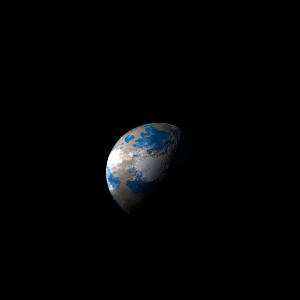|
|
Space Astro
|
Info for exoplanet "Nasezik Irus"
| Scientific (actual) data |
|---|
| Name | K2-413 b |
| Planet status | Confirmed |
| Radius | 0.067794 |
| Orbital period | 0.8094 |
| Semi major axis | 0.0117 |
| Inclination | 89.9518 |
| Discovered | 2022 |
| Updated | 2022-12-15 |
| Tzero tr | 2457740 |
| Publication | Published in a refereed paper |
| Detection type | Primary Transit |
| Radius measurement type | Primary Transit |
| Alternate names | EPIC 246078343 b |
| Star name | K2-413 |
| Right ascension | 353.42° |
| Declination | -7.61° |
| Mag k | 11.86 |
| Star distance | 292.52 |
| Star metallicity | -0.205 |
| Star mass | 0.808 |
| Star radius | 0.7 |
| Star temperature | 4116 |
| Wikipedia article | K2-413 b |
Back
| |
| Fictional info (?) |
|---|
| Suggested name | Nasezik Irus |
| Planet type | Hot planet |
| When viewed from Earth, this proximity to K2-413 means the planet can only be seen near the western or eastern horizon during the early evening or early morning.
The outer atmosphere is visibly segregated into several bands at different latitudes, resulting in turbulence and storms along their interacting boundaries. |
| Atmosphere | Carbon dioxide | 30% |
| Nitrogen | 23% |
| Hydrogen | 22% |
| Carbon monoxide | 20% |
| Hydrogen chloride | 4.7% |
| Ammonium hydrosulfide (NH4SH) | 0.065% |
| Hydrogen peroxide | 0.02% |
| 2H2O | 0.0014% |
| Nitric oxide | 0.001% |
| Molecular hydrogen | 0.00062% |
| Atmospheric pressure | 80 bar |
 |
| No known satellites |
| Google search for Nasezik irus |
|
Website by Joachim Michaelis
|
|
|
|